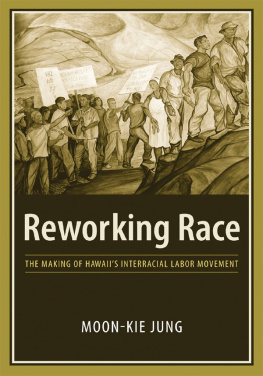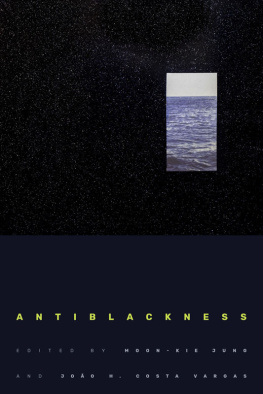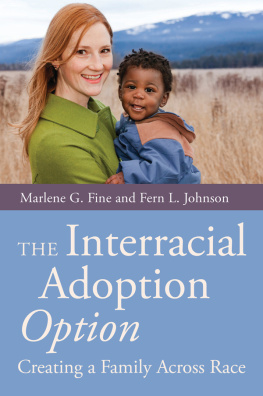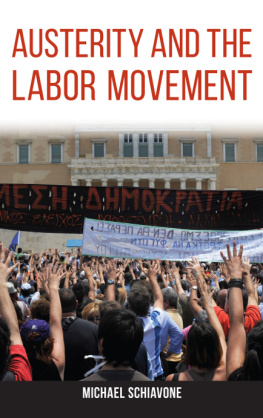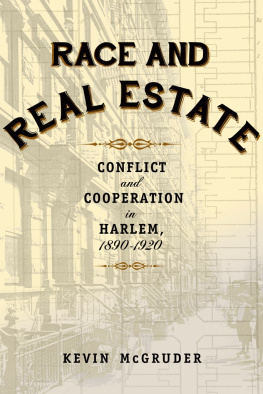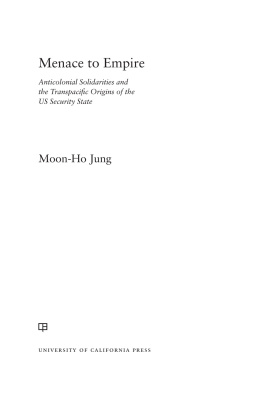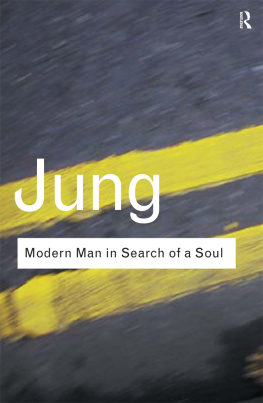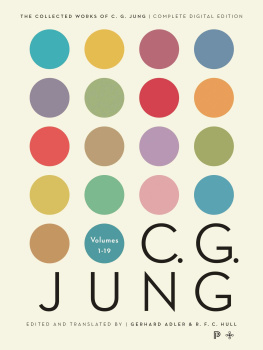Moon-Kie Jung - Reworking Race: The Making of Hawaiis Interracial Labor Movement
Here you can read online Moon-Kie Jung - Reworking Race: The Making of Hawaiis Interracial Labor Movement full text of the book (entire story) in english for free. Download pdf and epub, get meaning, cover and reviews about this ebook. year: 2006, publisher: Columbia University Press, genre: Politics. Description of the work, (preface) as well as reviews are available. Best literature library LitArk.com created for fans of good reading and offers a wide selection of genres:
Romance novel
Science fiction
Adventure
Detective
Science
History
Home and family
Prose
Art
Politics
Computer
Non-fiction
Religion
Business
Children
Humor
Choose a favorite category and find really read worthwhile books. Enjoy immersion in the world of imagination, feel the emotions of the characters or learn something new for yourself, make an fascinating discovery.
- Book:Reworking Race: The Making of Hawaiis Interracial Labor Movement
- Author:
- Publisher:Columbia University Press
- Genre:
- Year:2006
- Rating:4 / 5
- Favourites:Add to favourites
- Your mark:
- 80
- 1
- 2
- 3
- 4
- 5
Reworking Race: The Making of Hawaiis Interracial Labor Movement: summary, description and annotation
We offer to read an annotation, description, summary or preface (depends on what the author of the book "Reworking Race: The Making of Hawaiis Interracial Labor Movement" wrote himself). If you haven't found the necessary information about the book — write in the comments, we will try to find it.
Reworking Race: The Making of Hawaiis Interracial Labor Movement — read online for free the complete book (whole text) full work
Below is the text of the book, divided by pages. System saving the place of the last page read, allows you to conveniently read the book "Reworking Race: The Making of Hawaiis Interracial Labor Movement" online for free, without having to search again every time where you left off. Put a bookmark, and you can go to the page where you finished reading at any time.
Font size:
Interval:
Bookmark:



CUP would be pleased to hear about your reading experience with this e-book at .
| AFL | American Federation of Labor |
| AHPP | Association of Hawaiian Pineapple Packers |
| CALPACK | California Packing Company |
| CIO | Committee for Industrial Organization (from 1935 to 1938) Congress of Industrial Organizations (since 1938) |
| FJL | Federation of Japanese Labor |
| FLU | Filipino Labor Union |
| HAPCO | Hawaiian Pineapple Company |
| HC&S | Hawaiian Commercial and Sugar Company |
| HERA | Hawaii Employment Relations Act |
| HILA | Hilo Longshoremens Association (predecessor to ILWU Local 136) |
| HOLA | Honolulu Longshoremens Association (predecessor to ILWU Local 137) |
| HSPA | Hawaiian Sugar Planters Association |
| HWA | Higher Wages Association |
| HWM | High Wage Movement |
| HWWA | Honolulu Waterfront Workers Association |
| IAH | Industrial Association of Hawaii |
| IBU | Inland Boatmens Union |
| ILA | International Longshoremens Association |
| ILWU | International Longshoremens and Warehousemens Union (International Longshore and Warehouse Union since 1997) |
| LASSCO | Los Angeles Steamship Company |
| LML | Libby, McNeill & Libby |
| MC&S | Marine Cooks and Stewards Union |
| MPMWIU | Maui Plantation and Mill Workers Industrial Union |
| MTC | Metal Trades Council |
| NLRB | National Labor Relations Board |
| PAC | Political Action Committee |
| PAWWA | Port Allen Waterfront Workers Association (predecessor to ILWU Local 135) |
| PCD | Pacific Coast District of the International Longshoremens Association |
| PLSC | Planters Labor and Supply Company |
| SUP | Sailors Union of the Pacific |
| UCAPAWA | United Cannery, Agricultural, Packing, and Allied Workers of America |
| UHW | Union of Hawaiian Workers |
| USED | United States Engineering Department |
| USES | United States Employment Service |
| WIA | Wage Increase Association |
| YMBA | Young Mens Buddhist Association |
Font size:
Interval:
Bookmark:
Similar books «Reworking Race: The Making of Hawaiis Interracial Labor Movement»
Look at similar books to Reworking Race: The Making of Hawaiis Interracial Labor Movement. We have selected literature similar in name and meaning in the hope of providing readers with more options to find new, interesting, not yet read works.
Discussion, reviews of the book Reworking Race: The Making of Hawaiis Interracial Labor Movement and just readers' own opinions. Leave your comments, write what you think about the work, its meaning or the main characters. Specify what exactly you liked and what you didn't like, and why you think so.

